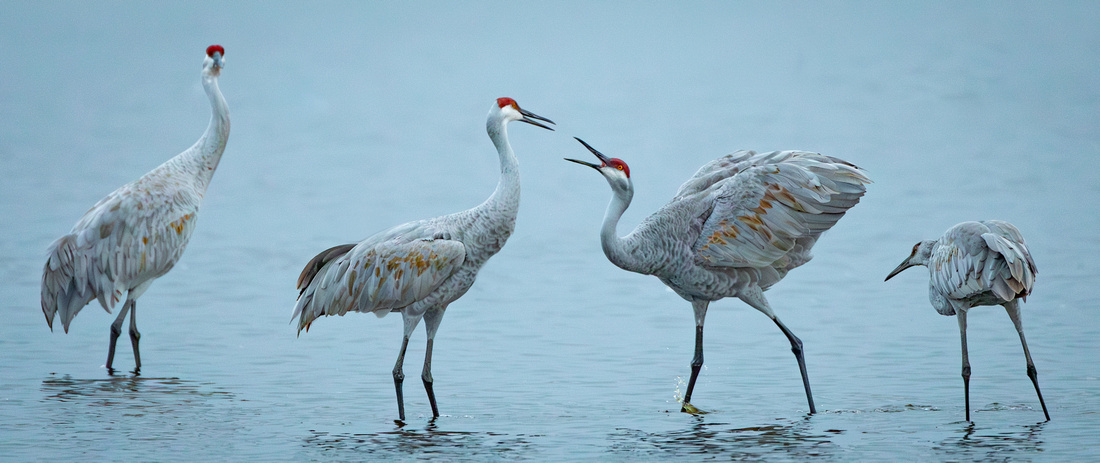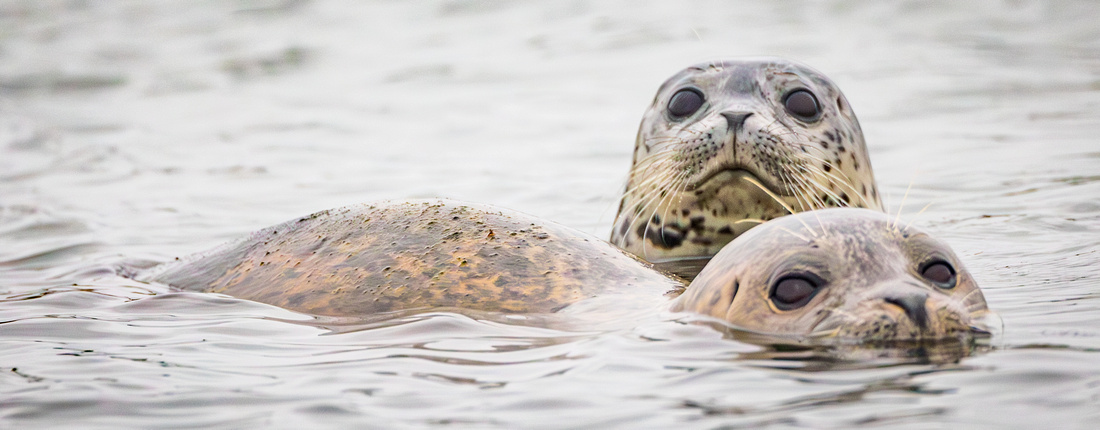Wildlife Panoramas
Wildlife Panoramas: A Different Way of Capturing Subjects
Text and photos by Heather Cline
 
Sandhill Cranes Interacting |
Last week, I posted an article on using your telephoto lens to capture landscape images. That got me to thinking about other unique ways to capture different subjects. I just happened to capture a wildlife panorama recently and thought it would be a good topic to share as inspiration for wildlife photography and art in general.
Panoramas are composite images of two or more photos that have been stitched together. They can be short and wide or narrow and tall. There is no set panorama dimensions that must be followed, but rather what you as the photographer determines is right for the subject.
Showing The Subject's Environment
Capturing a bird in flight is a common goal for wildlife photographers, but when you can show the interaction with their environment, that is a bonus. Birds especially, live in so many different types of environments like forests, mountains, desert, and coastal. Being able to give a sense of place makes the image more interesting.
This American Kestrel had been sitting on this post among rolling green hills. Once he took off I decided to keep the post in the shot along with a simplified view of the background which was was achieved by using a large aperture. Often times, you want to shoot the subject moving into the frame but I decided to break the rules by showing where he came from!
 
|
Graphic Element
This is the image that made me want to write this article. I was shooting on the coast and noticed a complete lack of clouds which can make for 'less than stellar' sunset shots. When I saw this jetty with the gulls, I found an opportunity to create something simple and interesting. There are just two colors here and no detail other than the outlines, but it is effective as a graphic element and still gives the viewer enough information to understand the subject being captured.
 
|
Telling The Story
Wildlife is always telling us stories. We just have to slow down long enough to take them in. If I had just captured this in a single shot, I could have shown 1 or 2 sleeping California sea lions but a panorama allows me to show a group and how they leverage man made objects to cooperate and compete with each other for sleeping space.
 
|
Isolating The Subject
Sometimes the standard 3:2 format of the image that comes out of the camera isn't the most ideal. This is especially true when the subject's surroundings don't add a lot to the final photo. Using a panorama format allows you to keep the content that matters most. Harbor Seals are very shy animals and don't spend a lot of time interacting with each other, but a mother pup relationship is very special so capturing them together while eliminating the excess water around them improves the composition of the image.
 
|
I hope this post gave you some ideas to use the next time you are out capturing wildlife so you are not stuck in the 3:2 box!